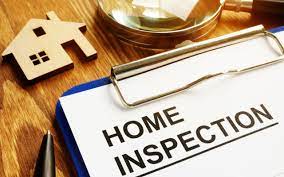A home inspection is a crucial part of the homebuying process, as it helps you uncover potential issues with the property before finalizing the purchase. Here’s guidance on what to look for during a home inspection, how to choose a qualified inspector, and what to do if issues are found:
What to Look for During a Home Inspection:
- Structural Integrity:
– Inspect the foundation for cracks, settling, or water damage.
– Check for signs of structural issues in walls, ceilings, and floors.
- Roof and Exterior:
– Examine the roof for missing or damaged shingles, leaks, or signs of wear.
– Inspect the siding, gutters, and downspouts for damage or decay.
- Plumbing:
– Run faucets and check for water pressure issues or leaks.
– Inspect for visible signs of water damage in ceilings, walls, and around fixtures.
– Examine the condition of pipes, especially in older homes.
- Electrical Systems:
– Test light switches, outlets, and fixtures for proper function.
– Look for outdated wiring or electrical panels that may need upgrading.
- Heating, Ventilation, and Air Conditioning (HVAC):
– Check the HVAC system for signs of wear and ensure it operates correctly.
– Inspect air filters and inquire about maintenance history.
- Appliances and Fixtures:
– Test all appliances included in the sale to ensure they work.
– Inspect sinks, faucets, toilets, and other fixtures for leaks or issues.
- Insulation and Ventilation:
– Assess the insulation in the attic and walls.
– Check for proper ventilation in attics and crawl spaces.
- Basement/Crawlspace:
– Look for signs of water intrusion, dampness, or mold.
– Inspect the foundation walls and support beams.
- Pest and Mold Issues:
– Check for signs of pests (termites, rodents) and mold in dark or damp areas.
- Safety Features:
– Confirm the presence and functionality of smoke detectors, carbon monoxide detectors, and fire extinguishers.
Choosing a Qualified Inspector:
- Check Credentials:
– Ensure the inspector is licensed and certified in your state, if required.
– Ask for references and check online reviews.
- Experience:
– Choose an inspector with years of experience and a strong reputation.
- Sample Reports:
– Request sample inspection reports to understand the level of detail provided.
- Ask Questions:
– Inquire about the inspector’s process, the time it takes, and what areas they cover.
- Accreditation:
– Look for inspectors who are members of professional organizations like ASHI (American Society of Home Inspectors) or InterNACHI (International Association of Certified Home Inspectors).
What to Do if Issues are Found:
- Review the Inspection Report:
– Carefully go through the inspection report with your real estate agent and inspector.
– Prioritize issues based on their severity and cost of repair.
- Negotiate with the Seller:
– If significant issues are discovered, you may negotiate with the seller for repairs or a price reduction.
- Seek Estimates:
– Obtain repair estimates from qualified contractors for any necessary work.
- Consider Your Options:
– Depending on the severity of issues, you may decide to proceed with the purchase, request repairs, or, in extreme cases, withdraw from the deal.
- Plan for Future Maintenance:
– Use the inspection report to create a maintenance plan for your new home to address any ongoing issues.
Remember that no house is perfect, and minor issues are common. It’s essential to focus on significant concerns that affect the safety, structure, or value of the property. Working with a qualified home inspector and collaborating closely with your real estate agent will help you make informed decisions during the homebuying process.






